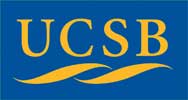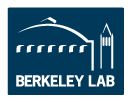All-Carbon Solar-Driven Water Splitting: Facilities
Professor Tung’s laboratory contains cutting-edge equipment necessary to synthesize, assembly and characterize novel nanomaterial device architectures. Key tools include the following. The QE-R IPCE System from Enli Tech. Inc (Taiwan), is a multifunctional work station for Photovoltaic measurement in tandem with determining the absolute external quantum efficiency (E.Q.E.) of photovoltaic device. It’s now used by research centers and solar cell manufacturers to improve conversion efficiency. The Raman Touch from Nanophoton (Japan) is top-of-the-line characterization tools for carbon based research. It features a new proprietary imaging mechanism that provides innovative Raman imaging instead of the traditional, time-consuming Raman mapping. The optical system, housed in a compact body, has been designed so as to automatize various operations. The Agilent 8453 UV-Visible spectrophotometer uses a photodiode array (PDA) for simultaneous measurement of the complete ultra-violet to visible light spectrum in less than one second. The PDA technique brings exceptional reliability and repeatability. The Q700 Tip Sonicator is the most technologically advanced sonicator available today. A state-of-the-art touch screen interface offers intuitive control and provides a user-friendly experience. The most important feature of a Sonicator is reproducibility. Improved internal circuitry guarantees more efficient operation, sample-to-sample consistency and most importantly, a reliable end result. An integrated solar-to-fuel and solar-to-electricity characterization station offers accurate measurement of output characteristics. The instrument is capable of measuring photoresponse (IQE & EQE & PCE & STH) spanning the entire solar spectrum, ranging from UV to near IR. Finally, a high-throughput electromechanical assembly enables the synergistic coupling of dissimilar functional building blocks to afford unprecedented material properties at nano-to-micro scale.







